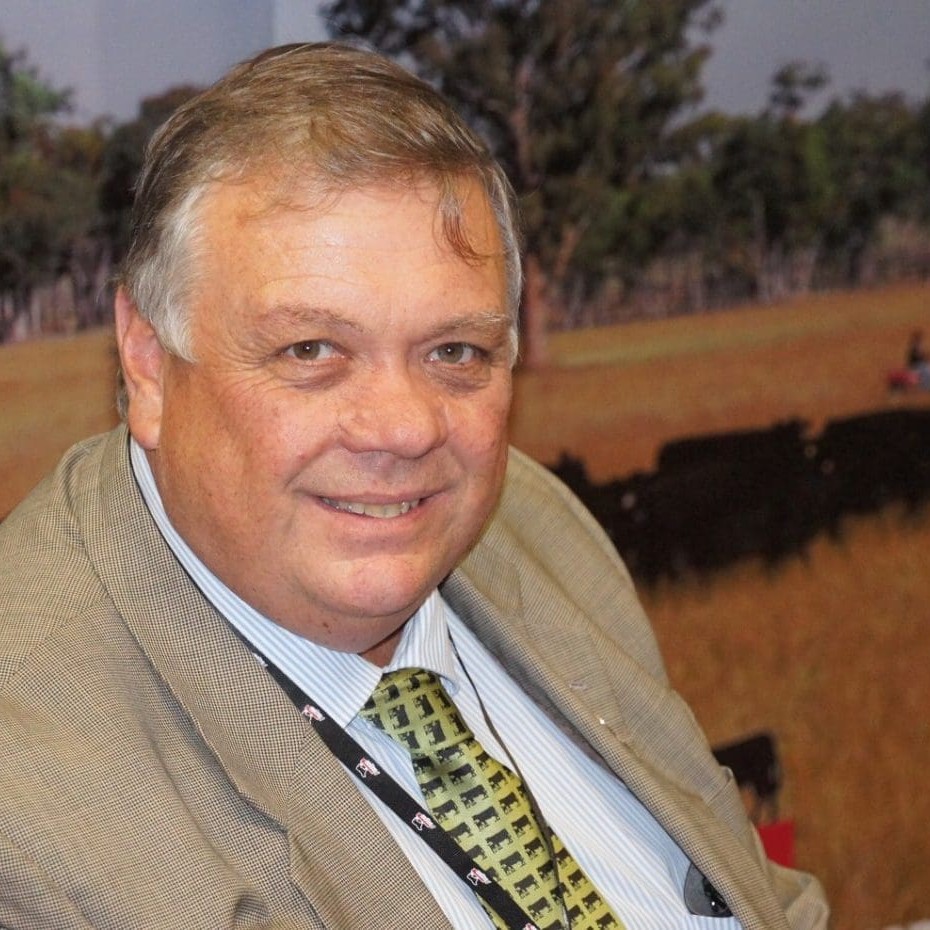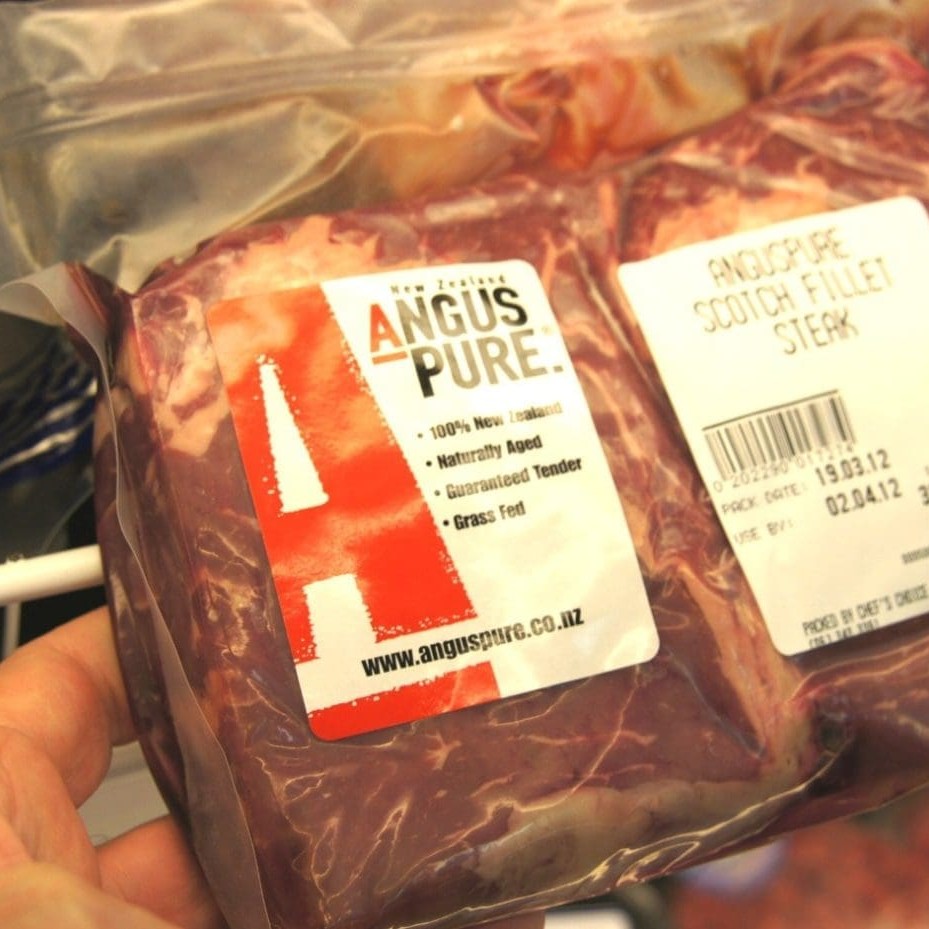 Spring bull selling season results in eastern Australia have reflected the strong support for Angus genetics from commercial cattlemen across a wide area, and New Zealand’s beef industry this year has experienced a similar trend.
Spring bull selling season results in eastern Australia have reflected the strong support for Angus genetics from commercial cattlemen across a wide area, and New Zealand’s beef industry this year has experienced a similar trend.
Tim Brittain, president of Angus New Zealand told Beef Central during a recent Australian visit that Angus had gained much the same dominant market position that had been seen in southern regions of Australia.
“The trend has become very strong, particularly over the past three or four years,” he said. “We’ve seen huge growth in the number of bulls sold and average prices paid for bulls.”
A former director of the NZ Meat Board and Meat NZ and a former chairman of the Meat and Wool Board’s economic service, Mr Brittain said NZ’s annual round of bull sales during June and July had produced ‘phenomenal’ results.
Commercial beef farmers had been paying $10,000 to $15,000 for Angus herd bulls, he said.
Two of New Zealand’s best-known Angus studs averaged above $10,900 for bulls this year, and there were many more averaging in the $7000-$9000 range.
“Certainly, commercial cattlemen in NZ would struggle to justify that purely on the basis of selling steers. But obviously the buyers are also placing a value on the improvement in genetics they are extracting in their females, through maternal performance. They’re taking a long-term view,” Mr Brittain said.
So given the almost total absence of grainfeeding as a finishing pathway in New Zealand (with the exception of the solitary Five Star feedlot on the North Island), do NZ Angus seedstock producers place much selection pressure on marbling?
“It’s starting to become more heavily selected for, but NZ is behind Australia in that respect. But we are looking at our branded beef programs, starting to differentiate product that is more heavily marbled, and rewarding those people that are producing it. We think a grassfed, marbled product is an exciting and attractive market niche for beef consumers worldwide, and we think it is achievable, under NZ pasture conditions.”
Mr Brittain said New Zealand’s annual ‘Steak of Origin’ carcase competition this year had highlighted the dominance of Angus genetics across the beef industry, winning five of six awards for which they were eligible.
“The cattle coming through that competition are showing quite high levels of marbling, even by comparison with grainfed animals. We think it is achievable on a fairly consistent basis, and we are looking to grow that niche,” he said.
While NZ is heavily dependent on US Angus genetics, just as Australia is (breeders heard at the recent Angus Australia national conference that about three-quarters of the genetic improvement in this country can be attributed to selective importation out of the US), NZ also sees Australia as an attractive source for genetic material. Just last year, Mr Brittain and a syndicate of NZ and Australian seedstock producers paid $91,000 for Te Mania Emperor – at that point an Australian Angus on-property record.
“There’s a good chance he will lift our cattle, injecting some more marbling, and he is very balanced. In our own herd, Storth Oaks, marbling is a trait which we are really selecting for.”
Somewhat surprisingly, given the strong dairy culture in NZ, only two or three of the nation’s larger seedstock herds used AI to any great degree, he said.
Solid growth in Angus Pure brand
 Tim Brittain also chairs Angus Pure, New Zealand’s Certified Angus grassfed brand program which parallels Australia’s Certified Australian Angus Beef ‘Angus Pure’ program.
Tim Brittain also chairs Angus Pure, New Zealand’s Certified Angus grassfed brand program which parallels Australia’s Certified Australian Angus Beef ‘Angus Pure’ program.
The NZ Angus Pure program also worked with the McDonalds burger chain for a Certified Angus grinding beef program, working closely with CAAB in Australia on that project. The NZ program recently reached a 2000t supply milestone to McDonald’s, NZ.
The NZ Angus Pure program was performing strongly on the NZ domestic market, in both food service and retail segments, and value-added products, Mr Brittain said.
Expanding interest worldwide in quality grassfed product was also adding momentum in NZ Angus beef exports.
“On the international stage, the word grassfed now resonates well with consumers, perhaps even more so than ‘Natural’, but either way NZ is well positioned to take advantage of that.”
NZ to host World Angus forum
Part of the reason for Mr Brittain’s recent Australian visit was to promote the World Angus Forum, which New Zealand will host next year.
Book-ended by optional tours of the South and North Islands, the conference will be held from 13-17 October next year in Queenstown and Rotorua.
The PGG Wrightson World Angus Forum conference week will feature international leaders sharing the latest innovations in Angus breeding, and the future direction for the industry worldwide. A world youth program is planned, plus field trips and a memorable social program. Another important component will be the celebration of 150 years of the introduction of the Angus breed into New Zealand.
“We’re hoping to see as many of our Australian cousins across for that as possible,” Mr Brittain said.
